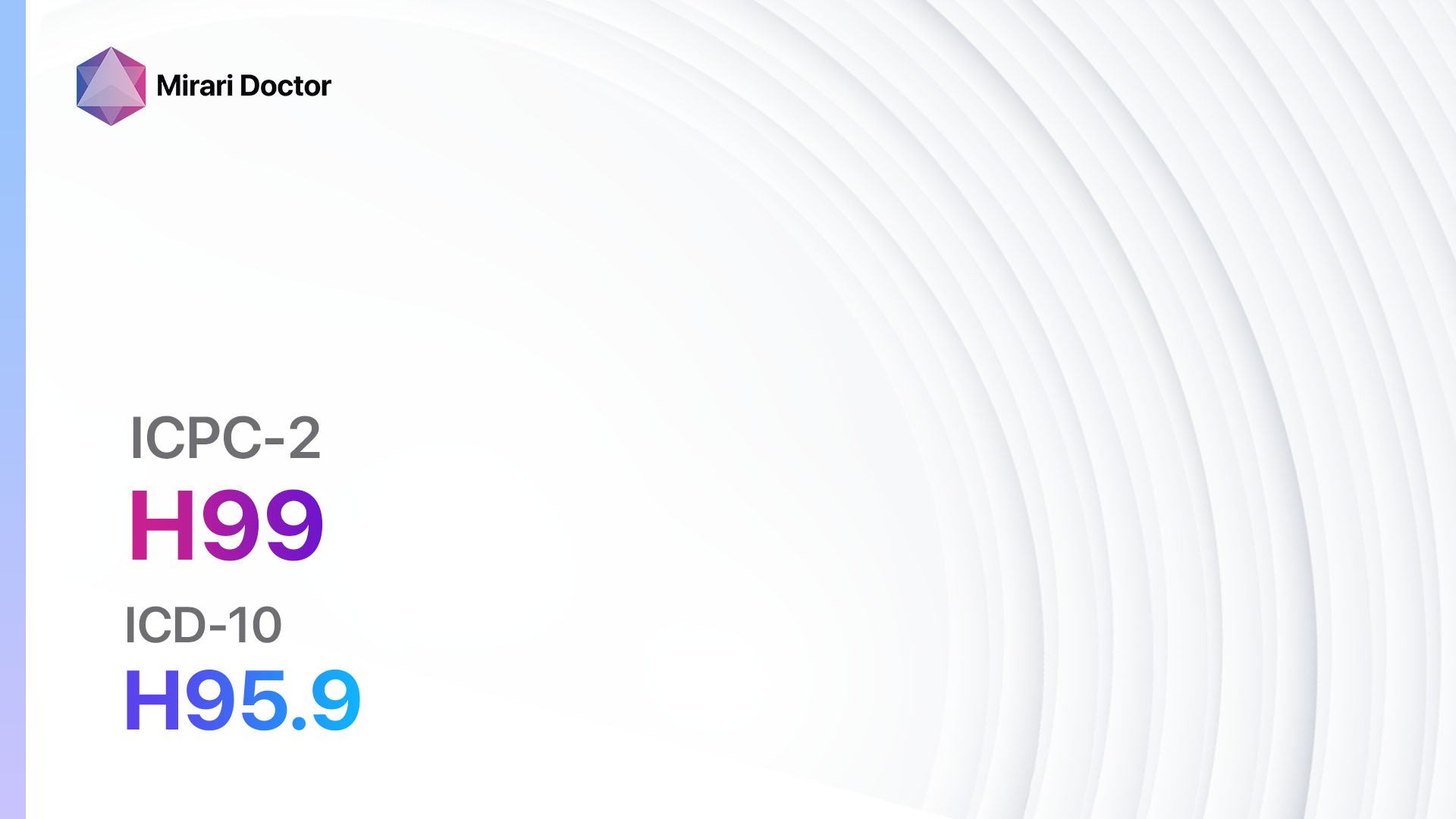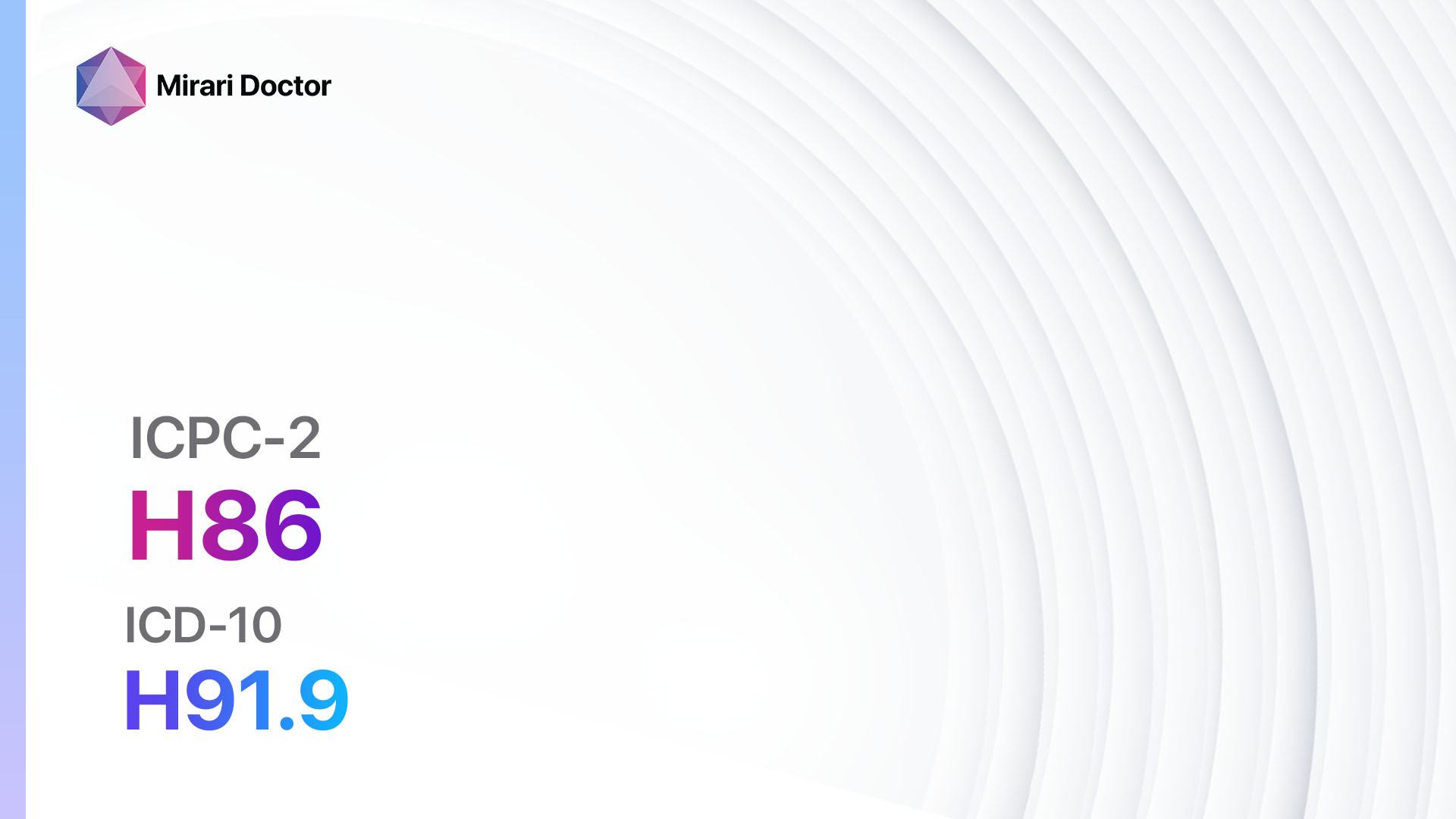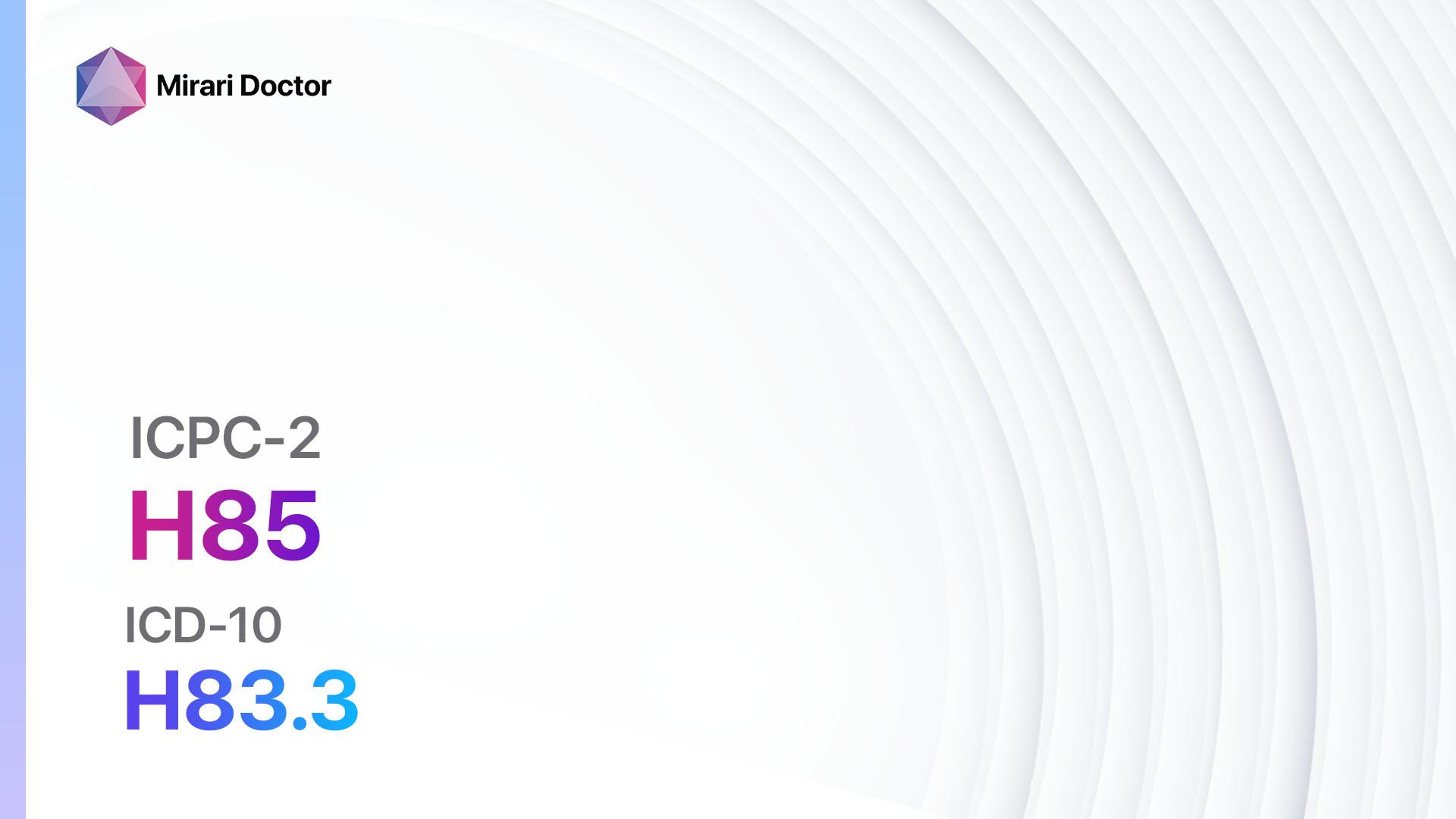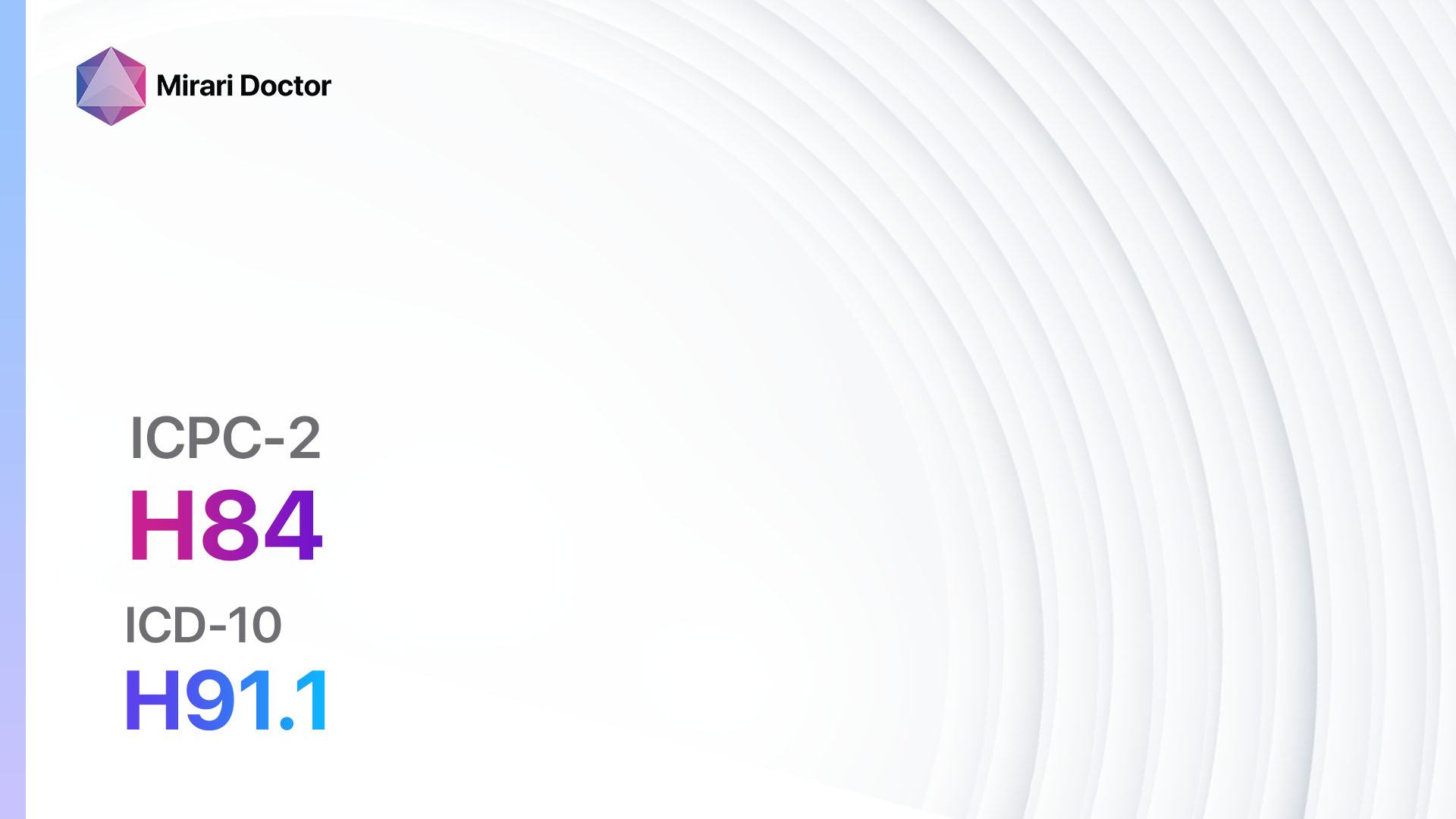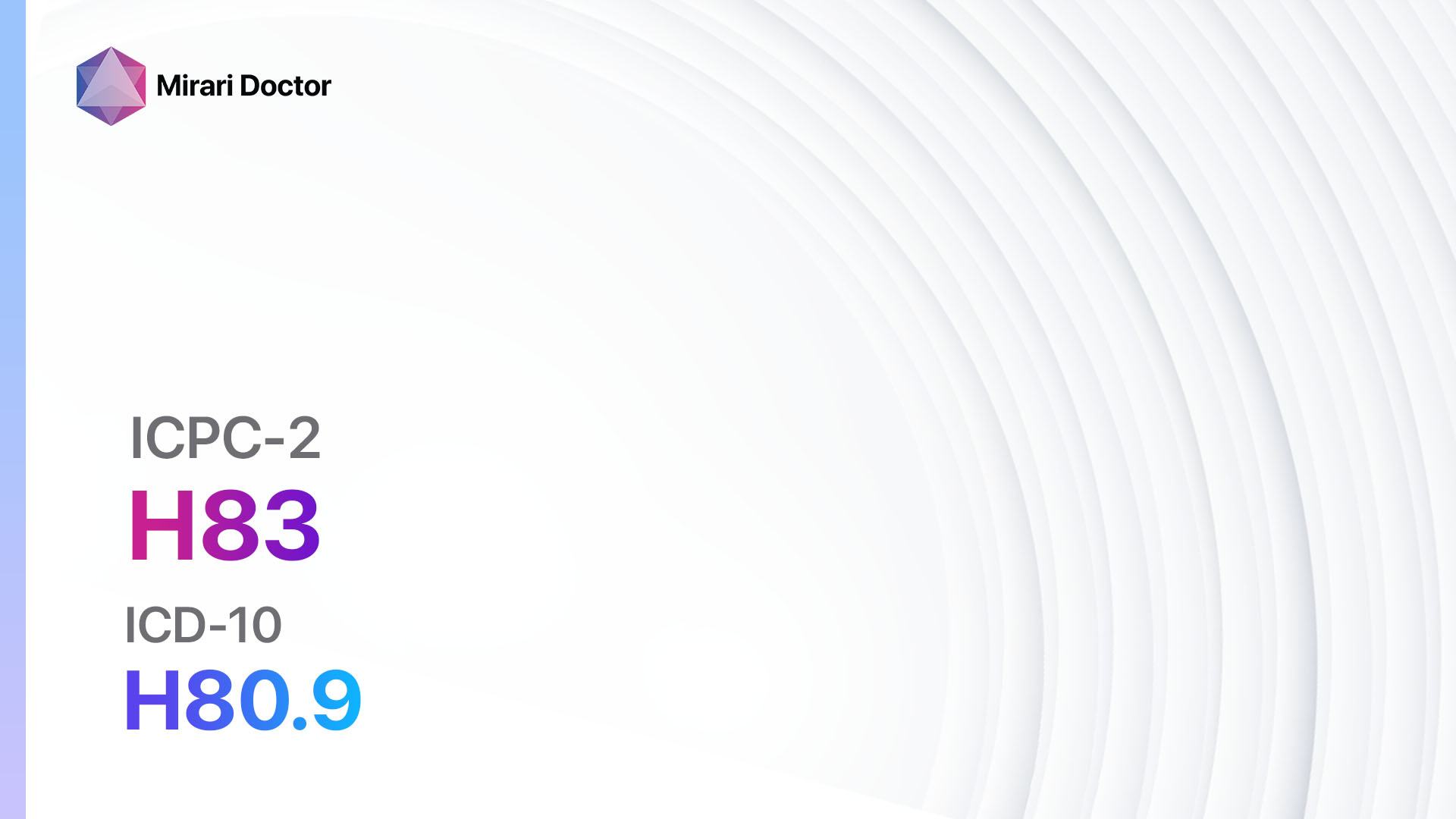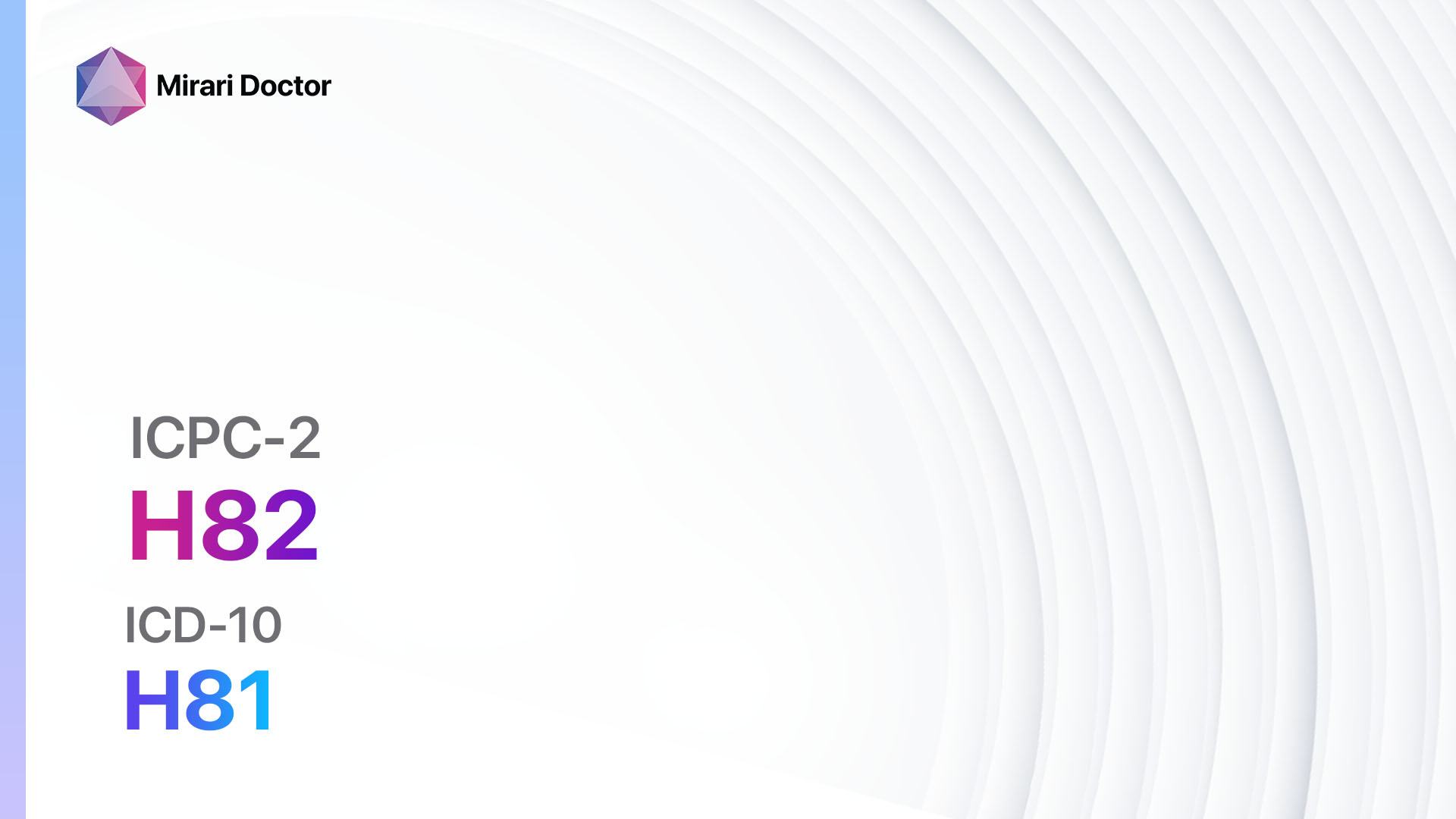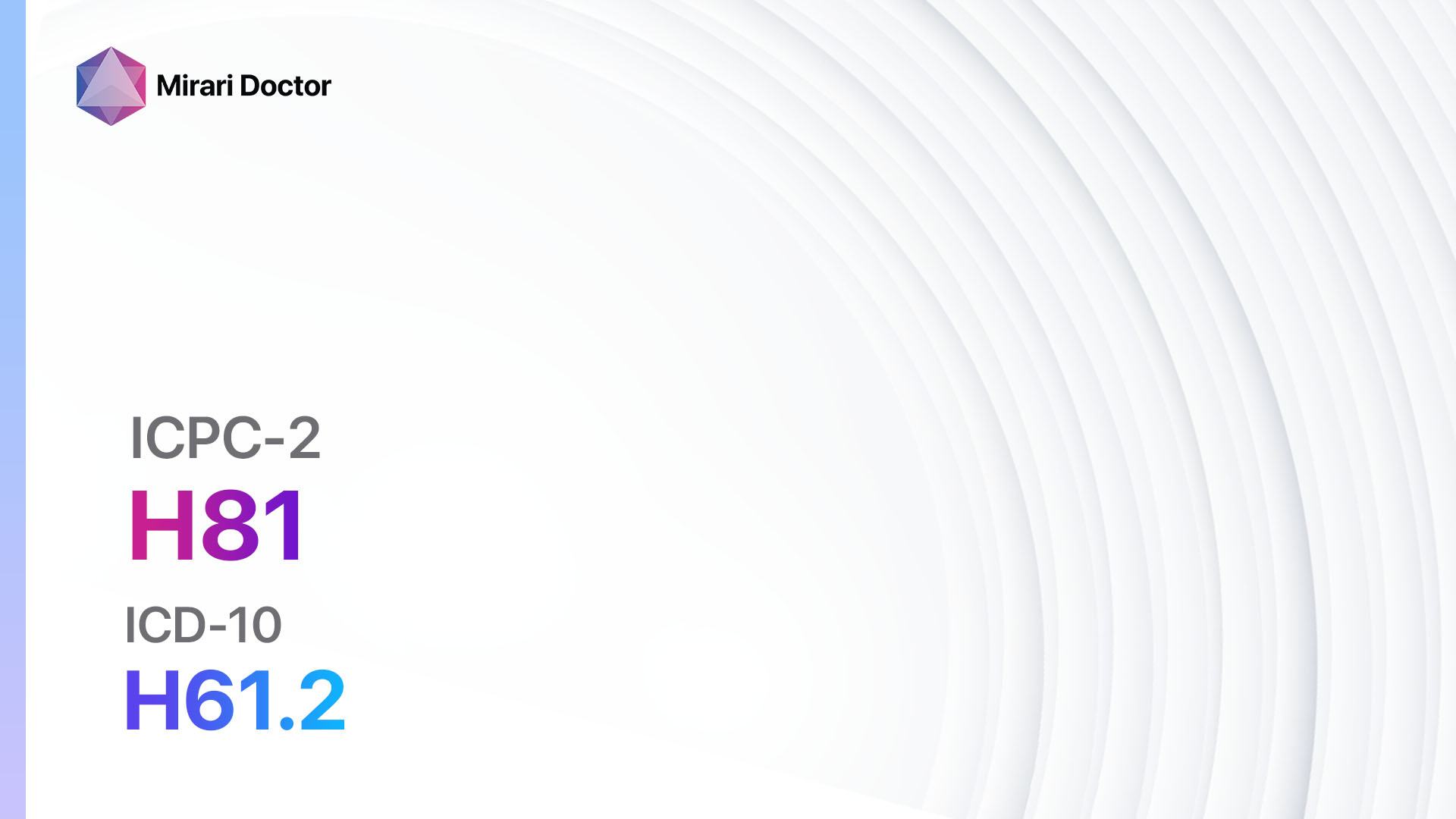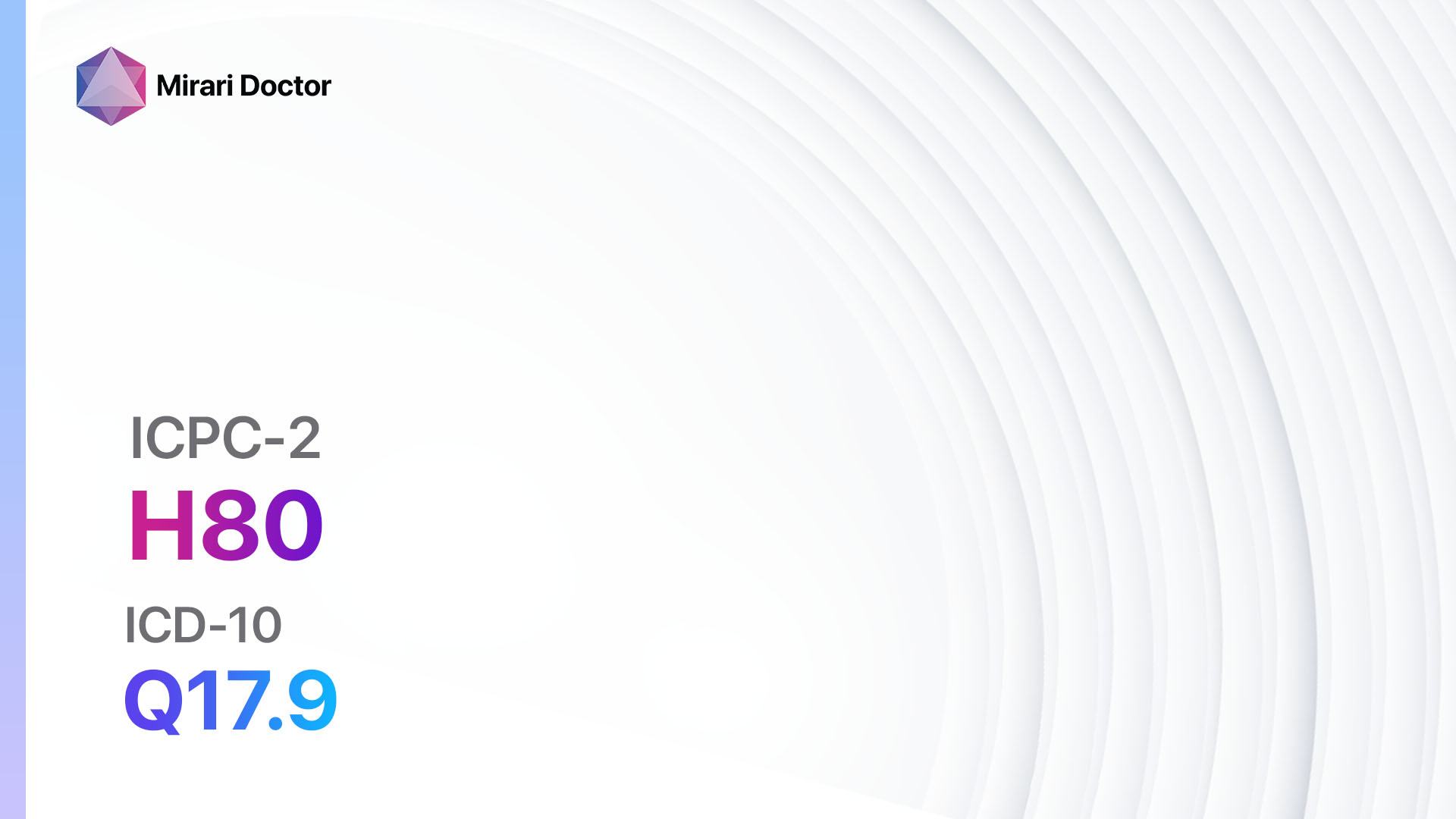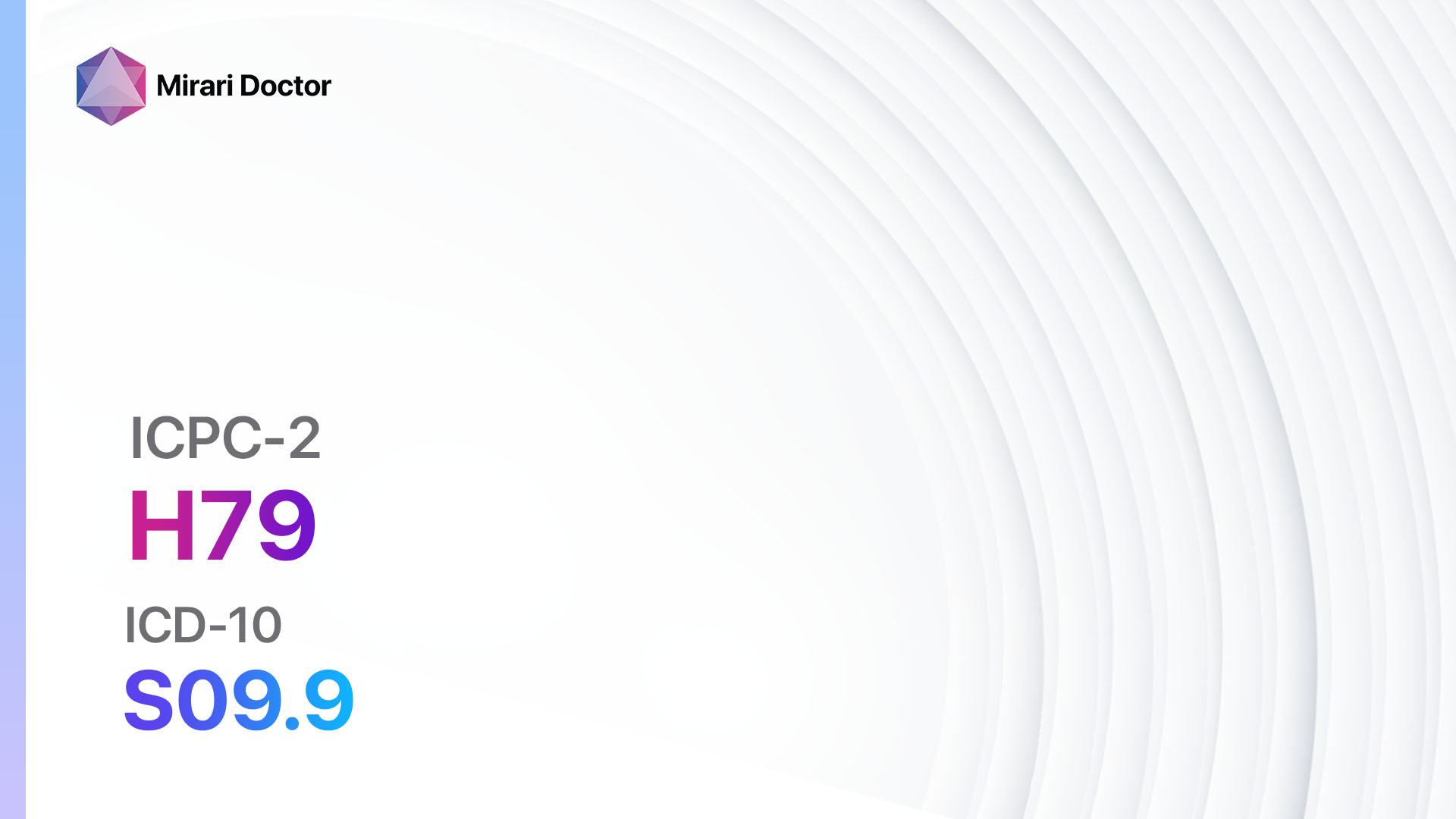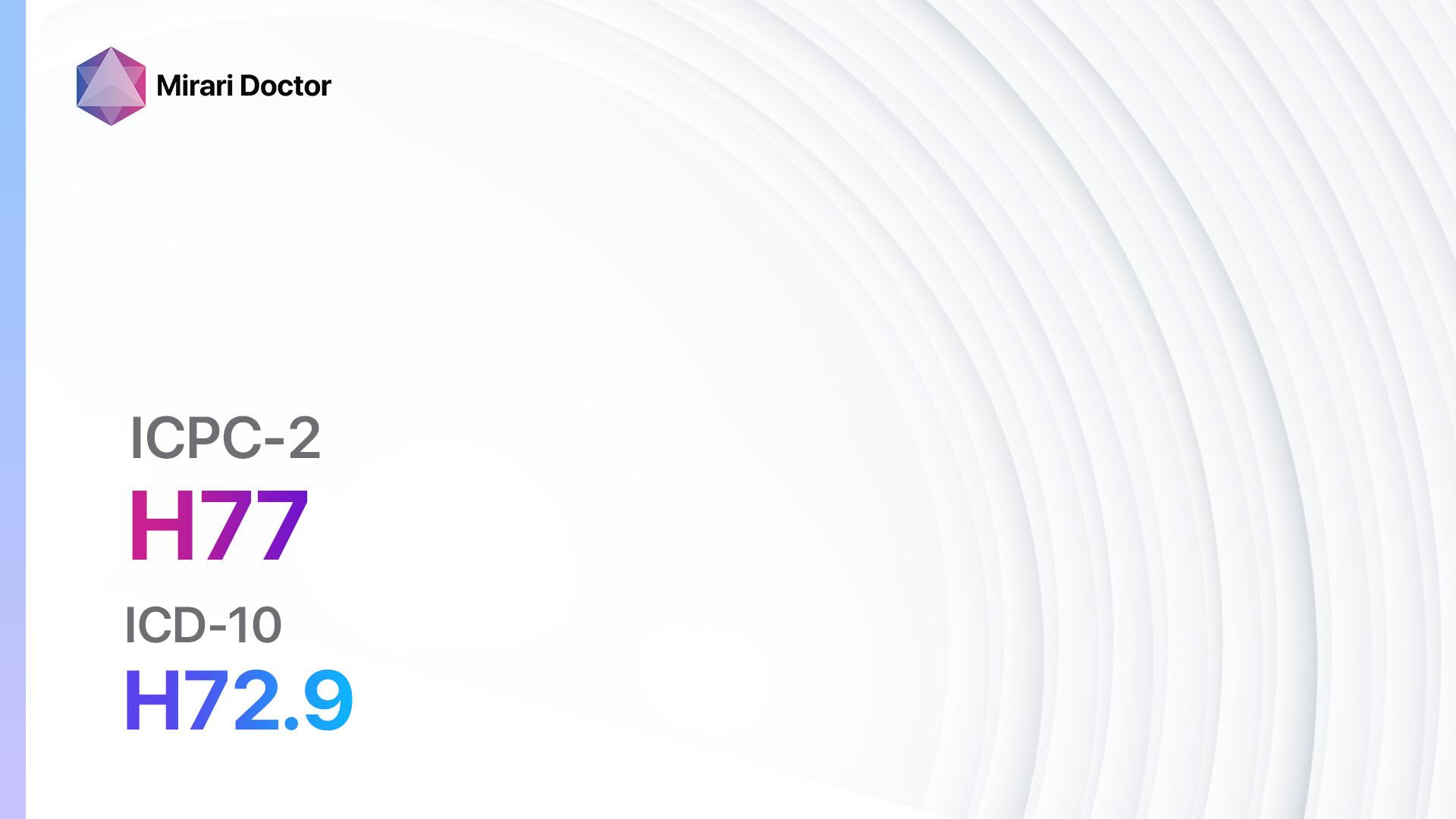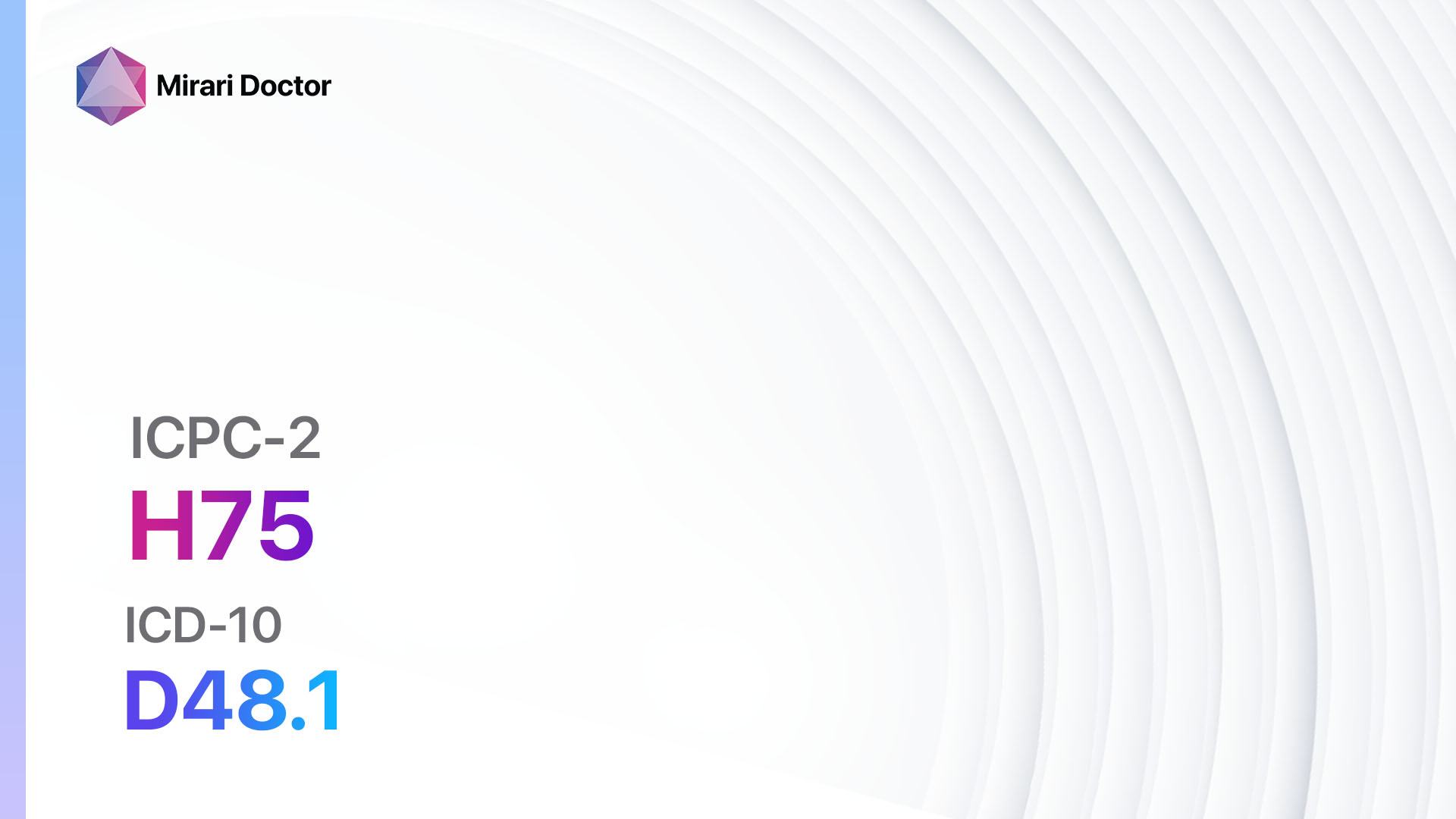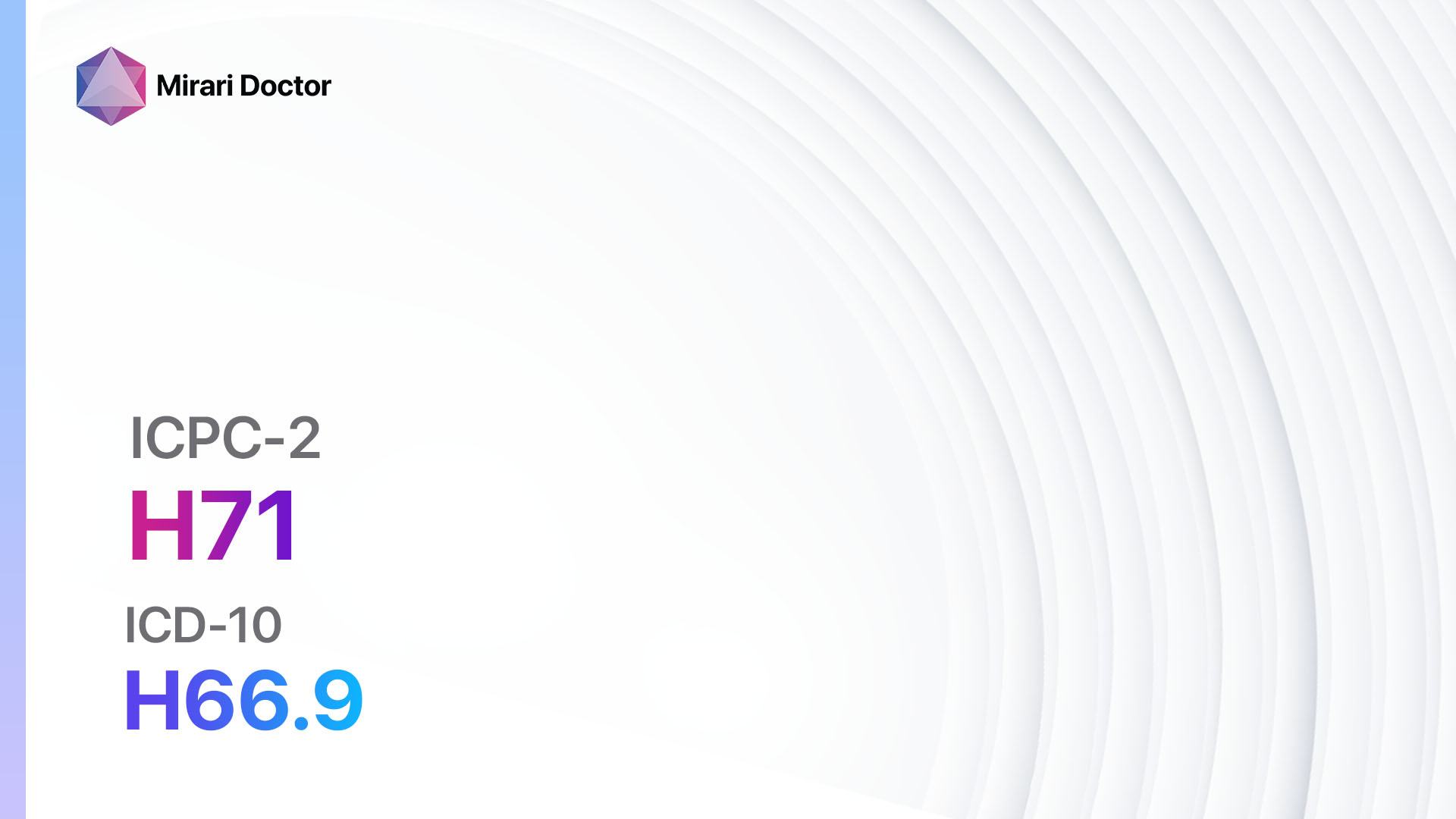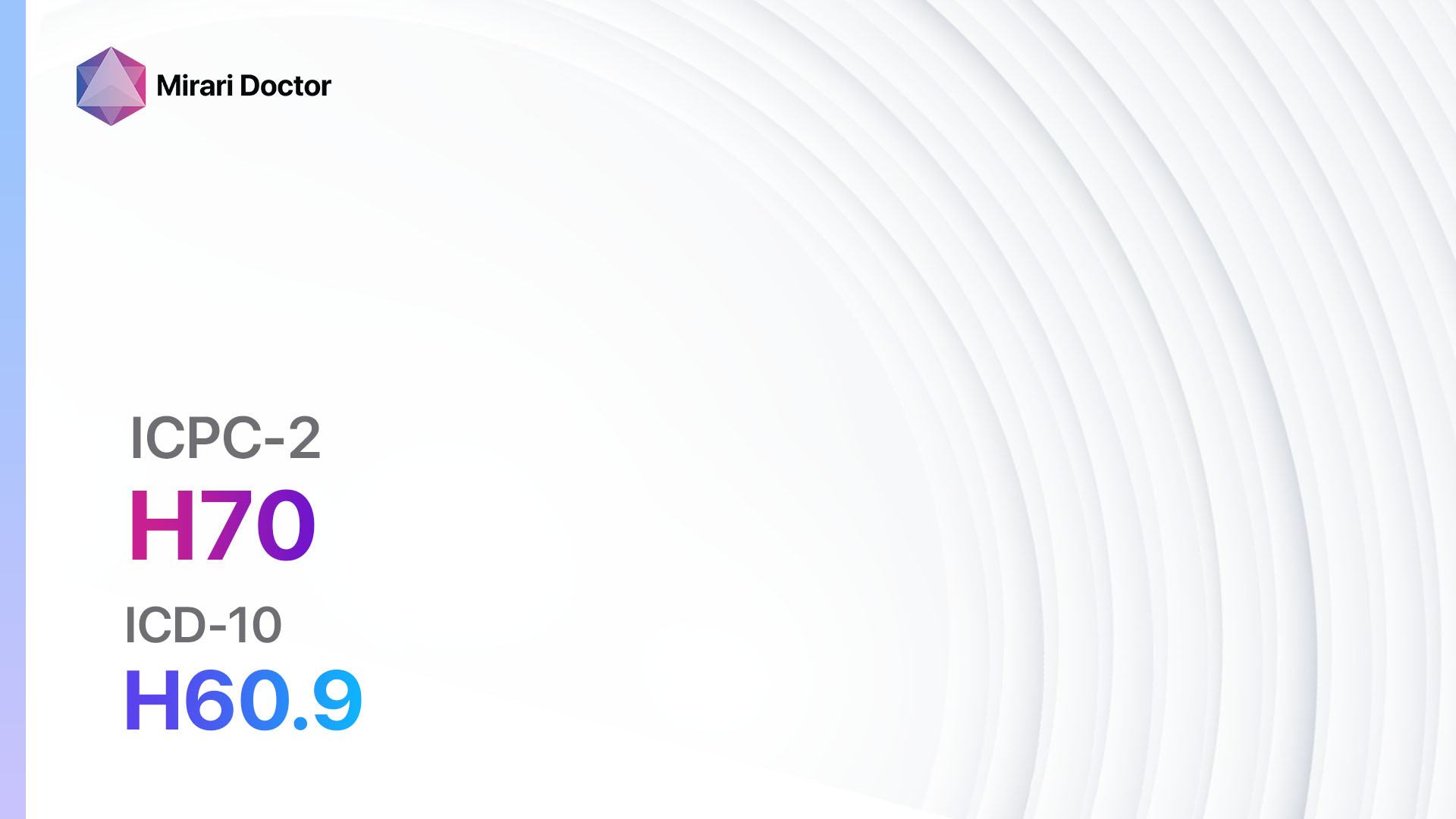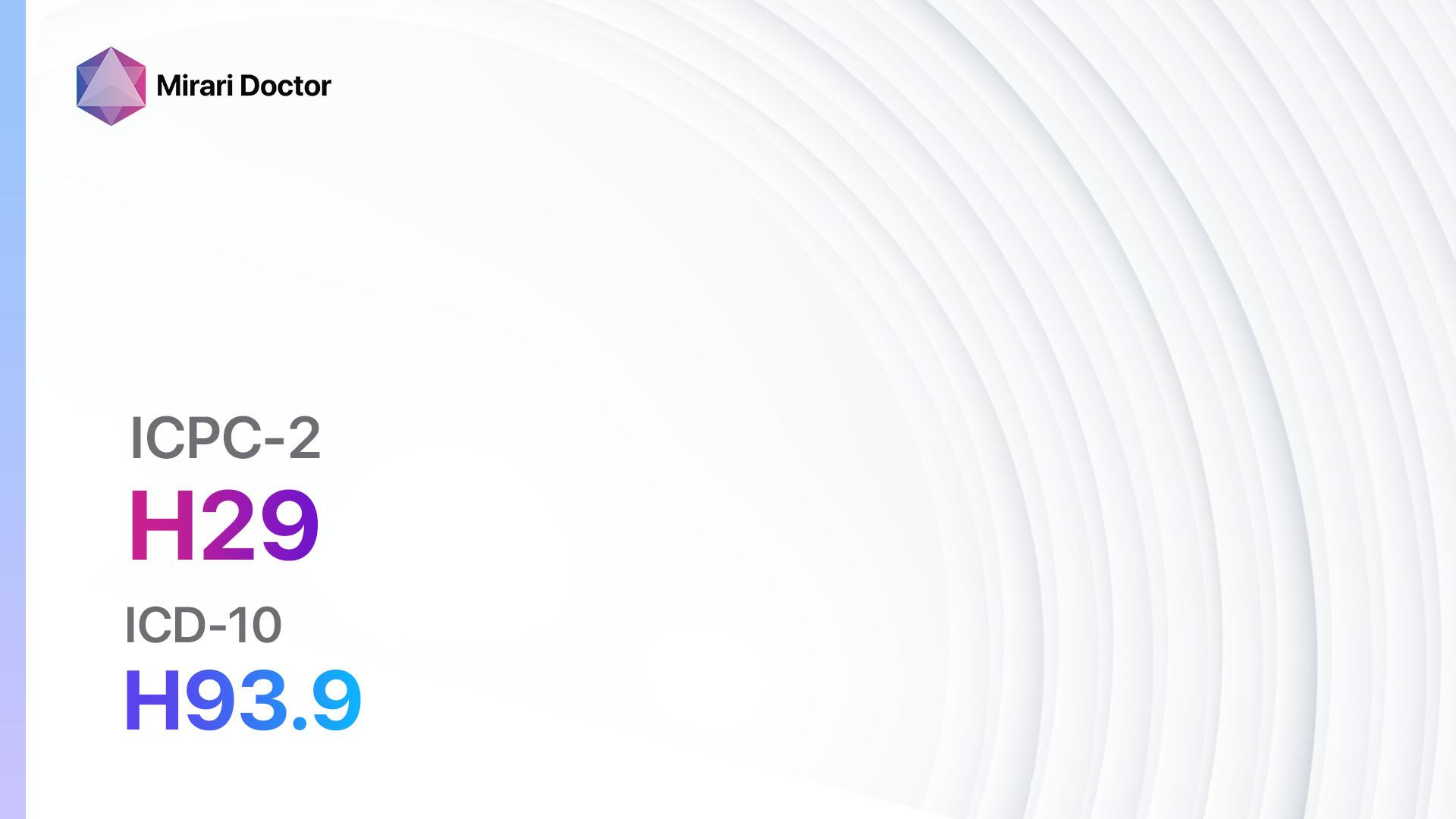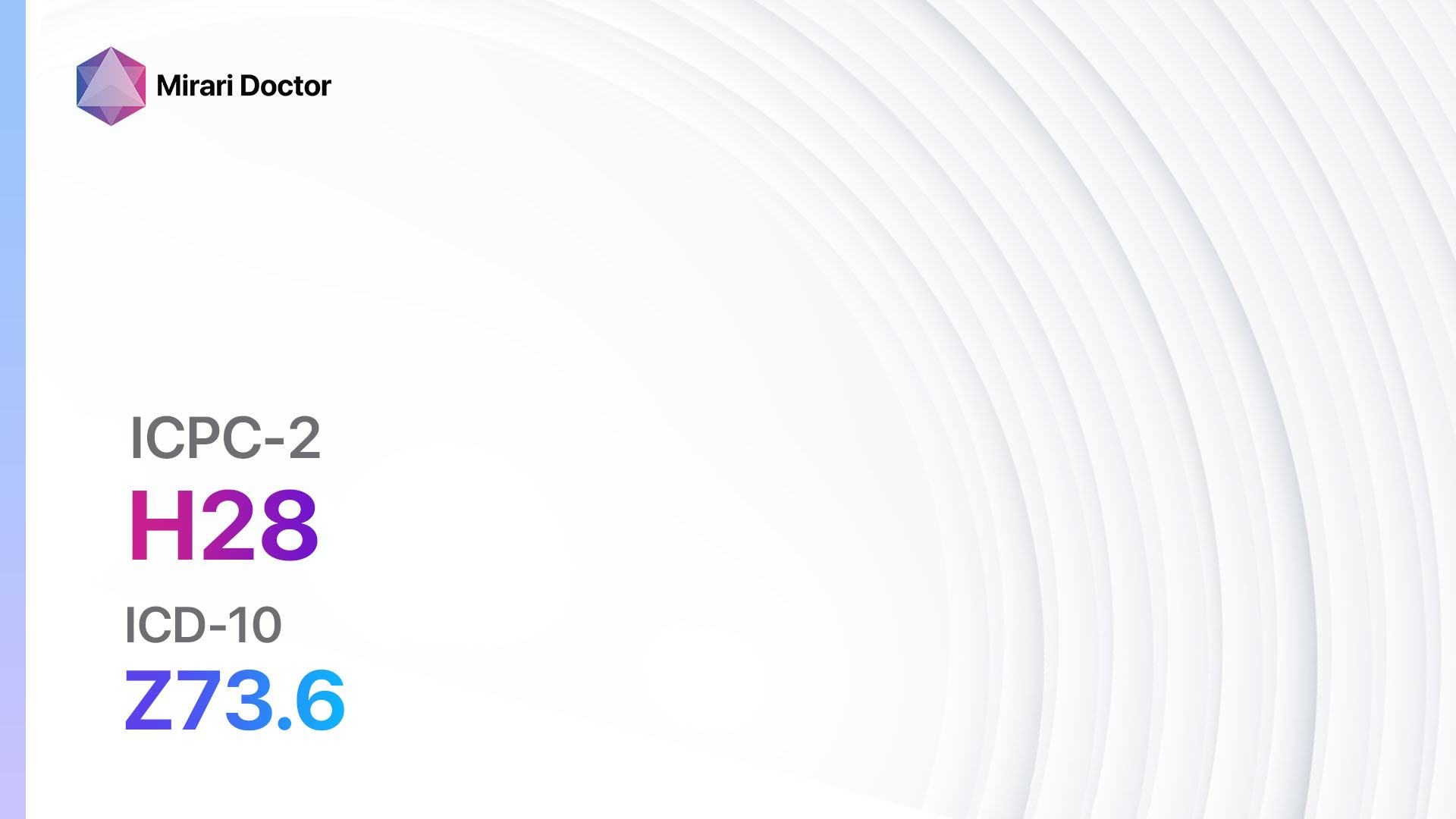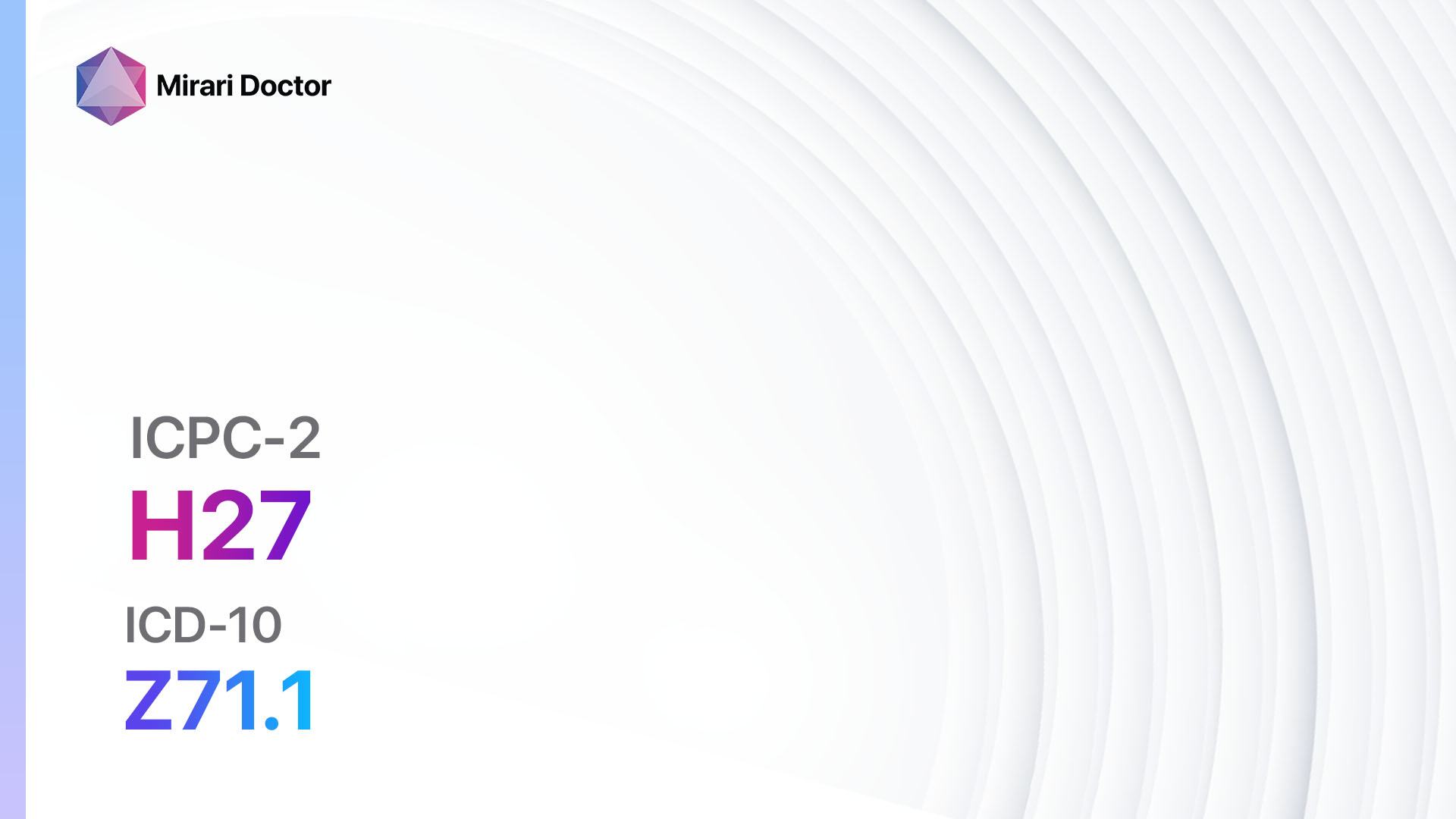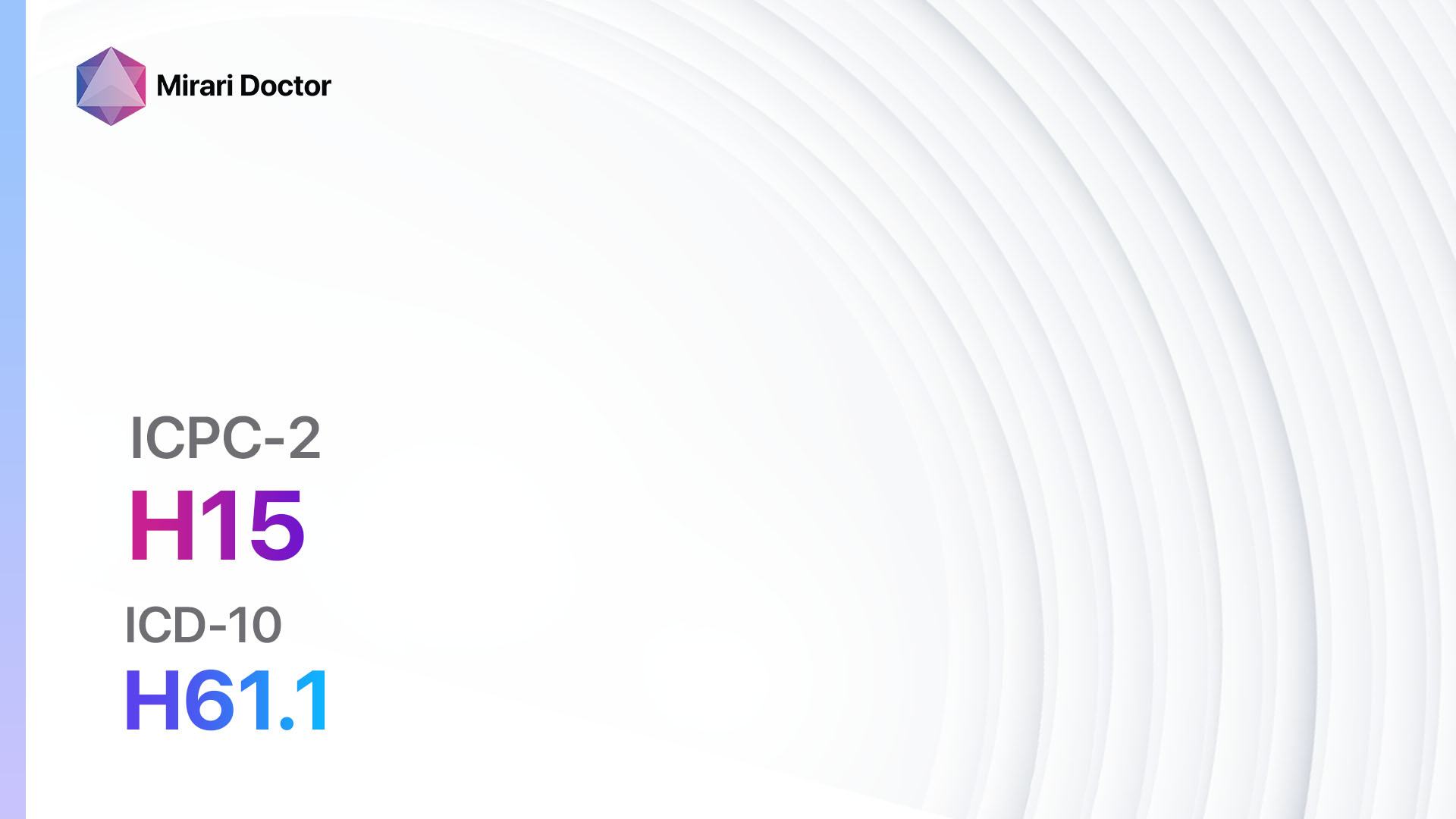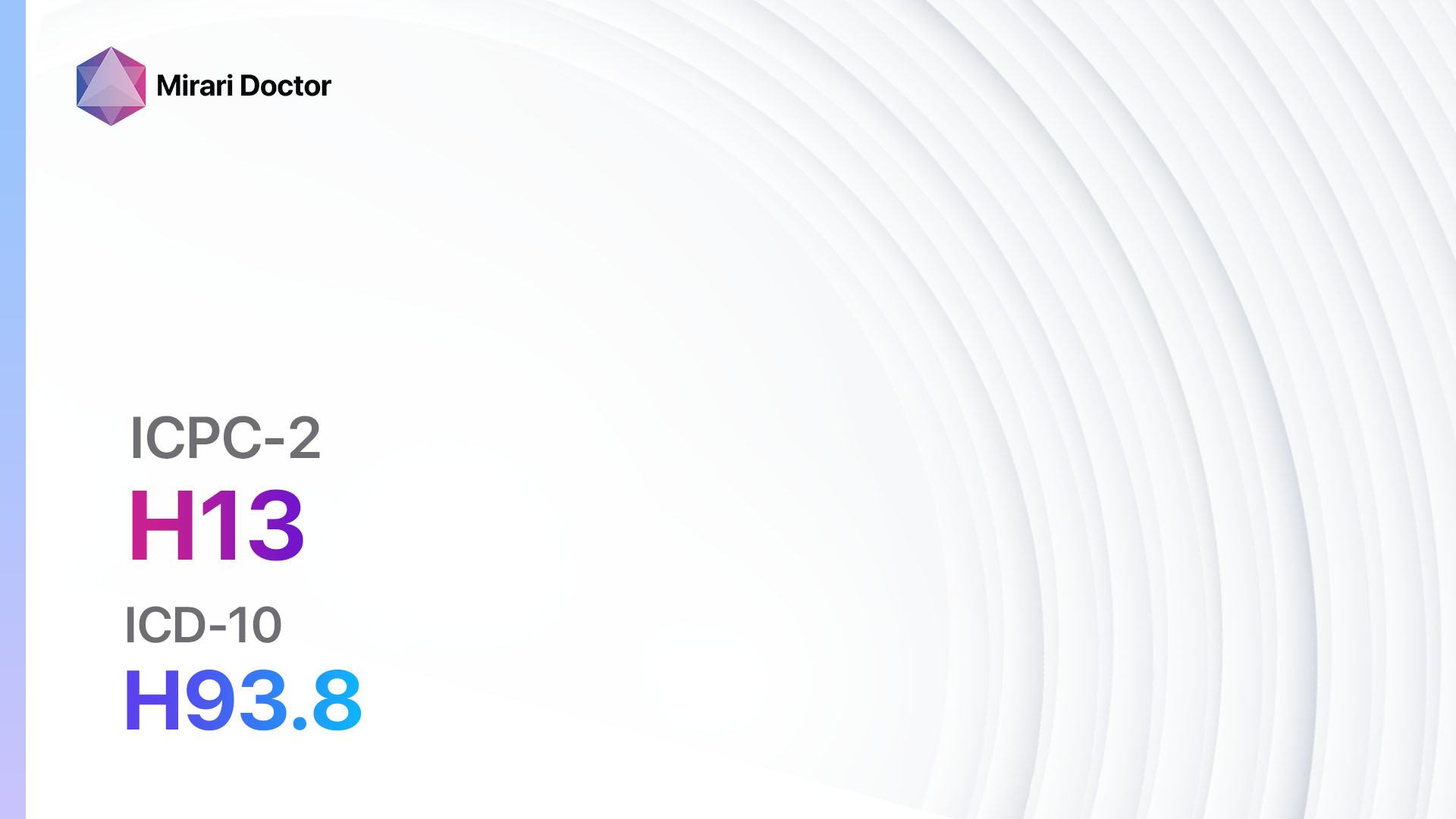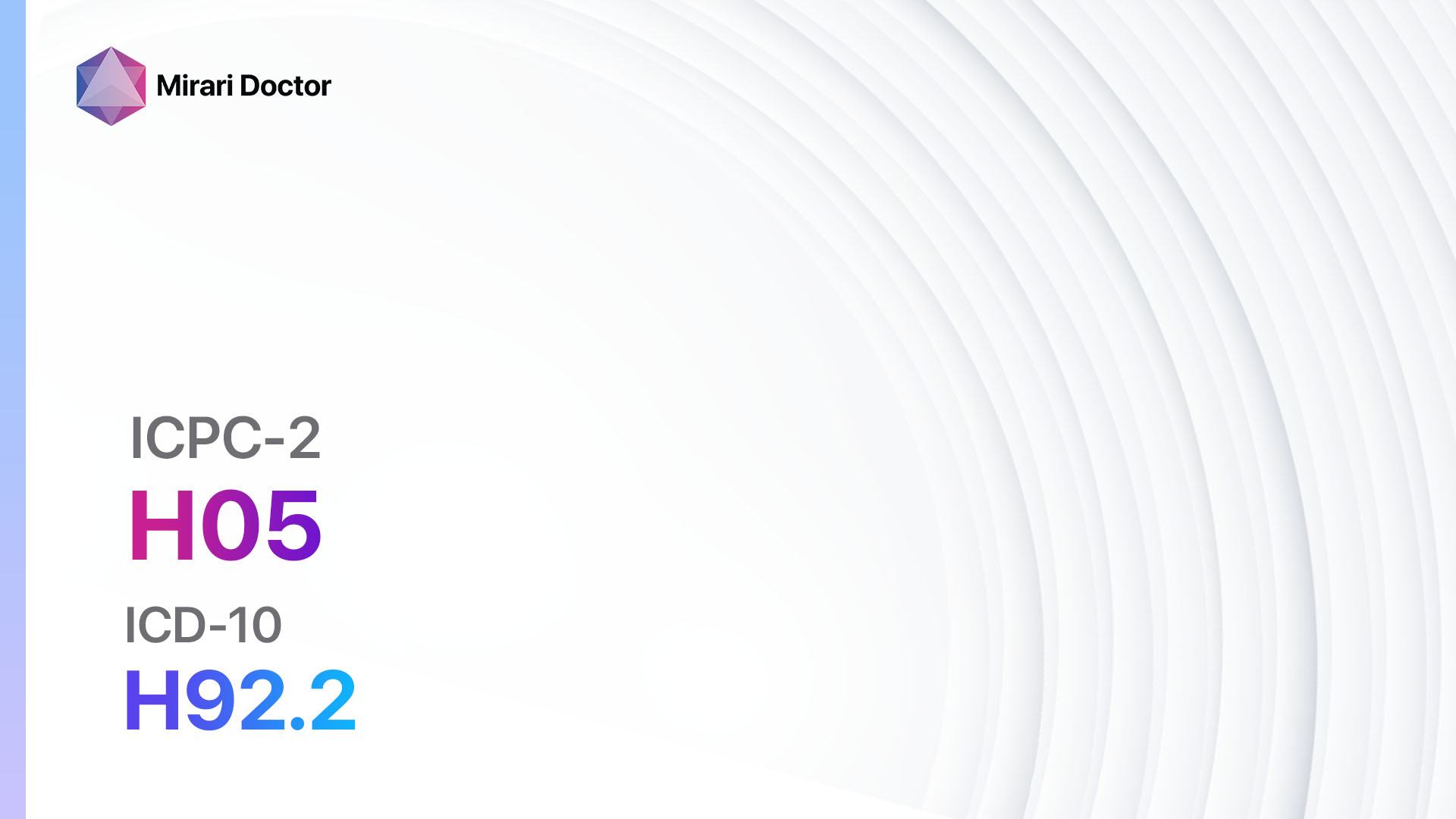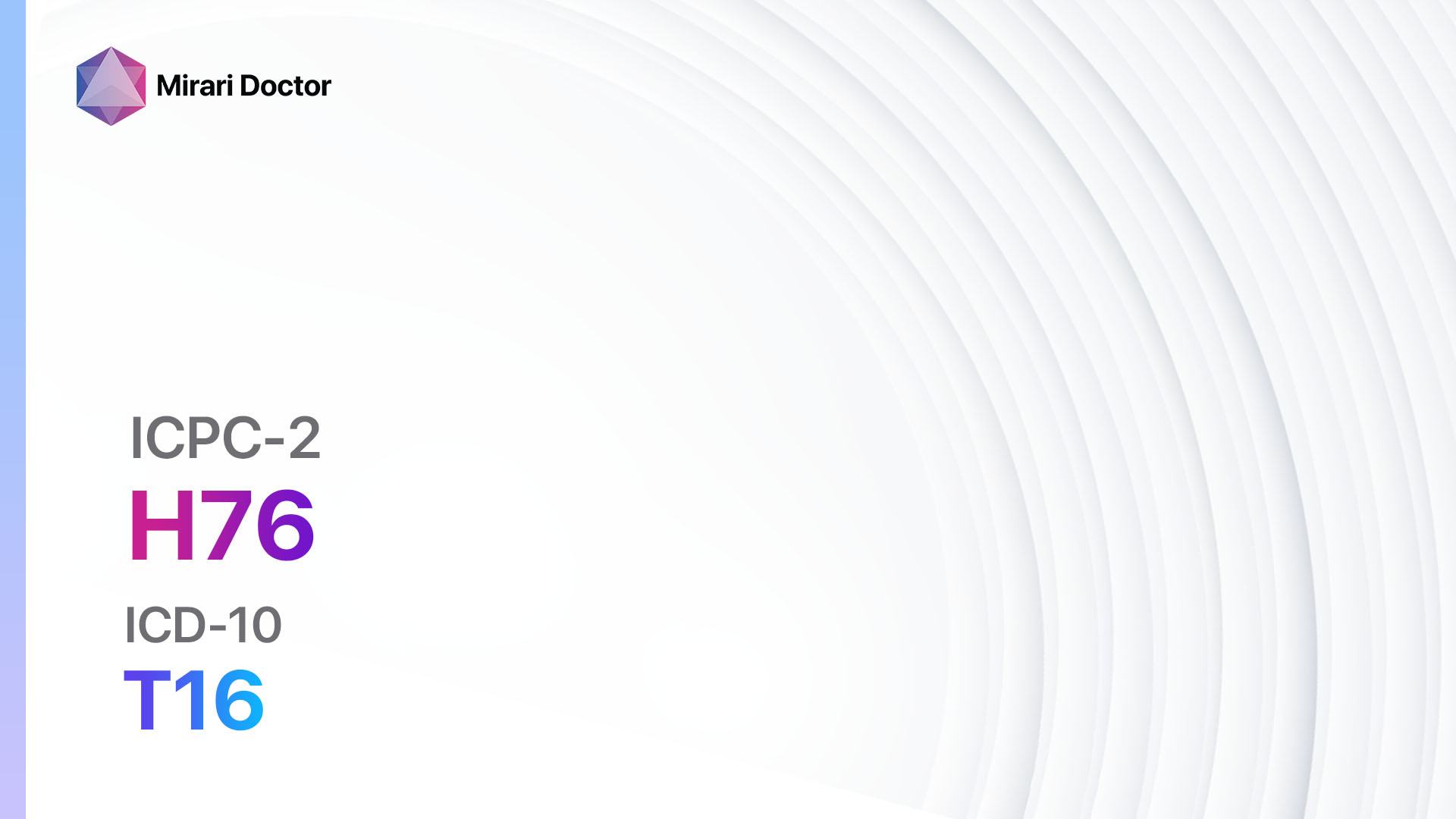
Introduction
Foreign bodies in the ear can cause discomfort and potential complications if not promptly addressed. This guide aims to provide an overview of the symptoms, causes, diagnostic steps, possible interventions, and follow-up care for foreign bodies in the ear.
Codes
Symptoms
- Ear pain: Patients may experience pain or discomfort in the affected ear.[1]
- Hearing loss: A foreign body in the ear can obstruct the ear canal and lead to temporary hearing loss.[2]
- Tinnitus: Some patients may report ringing or buzzing sounds in the affected ear.[3]
- Ear discharge: In some cases, a foreign body may cause the ear to produce abnormal discharge.[4]
- Itching or irritation: Patients may experience itching or irritation in the ear canal.[5]
Causes
- Accidental insertion: Foreign bodies in the ear are often the result of accidental insertion, especially in children.[6]
- Insects: Insects may crawl into the ear canal and become lodged.[7]
- Small objects: Small objects, such as beads, buttons, or cotton swabs, can accidentally enter the ear and become stuck.[8]
Diagnostic Steps
Medical History
- Gather information about the patient’s symptoms, including the duration and severity of pain, hearing loss, or discharge.[1]
- Inquire about any recent activities that may have led to the foreign body entering the ear.[6]
- Assess the patient’s medical history, including any previous ear infections or surgeries.[9]
Physical Examination
- Inspect the external ear for visible signs of a foreign body, such as objects protruding from the ear canal.[1]
- Use an otoscope to examine the ear canal and eardrum for any signs of obstruction or damage.[2]
- Assess the patient’s hearing using a tuning fork or other appropriate tests.[3]
Laboratory Tests
- No specific laboratory tests are typically required for diagnosing a foreign body in the ear.[9]
Diagnostic Imaging
- In some cases, imaging modalities such as X-rays or CT scans may be necessary to visualize the foreign body and assess its location and potential complications.[4]
Other Tests
- In certain situations, additional diagnostic tests may be necessary, such as tympanometry to assess middle ear function or cultures to identify any associated infections.[5]
Follow-up and Patient Education
- Provide appropriate instructions for follow-up care, including any necessary appointments for removal of the foreign body.[8]
- Educate the patient on the importance of avoiding further attempts to remove the foreign body at home.[6]
- Advise the patient on preventive measures to minimize the risk of future foreign body insertion.[7][10]
Possible Interventions
Traditional Interventions
Medications:
Top 5 drugs for Foreign body in ear:
- Ear drops (e.g., Acetic acid, Hydrocortisone):
- Cost: $5-$20 per bottle.
- Contraindications: Hypersensitivity to the medication.
- Side effects: Local irritation, allergic reactions.
- Severe side effects: Rare, but may include severe allergic reactions.
- Drug interactions: No significant drug interactions reported.
- Warning: Follow the instructions for use and avoid using if the eardrum is perforated.
- Topical anesthetics (e.g., Lidocaine):
- Cost: $10-$30 per bottle.
- Contraindications: Hypersensitivity to the medication.
- Side effects: Local irritation, allergic reactions.
- Severe side effects: Rare, but may include severe allergic reactions.
- Drug interactions: No significant drug interactions reported.
- Warning: Follow the instructions for use and avoid using if the eardrum is perforated.
- Oral analgesics (e.g., Acetaminophen, Ibuprofen):
- Cost: $5-$15 per bottle.
- Contraindications: Hypersensitivity to the medication, certain medical conditions (e.g., liver disease, bleeding disorders).
- Side effects: Upset stomach, allergic reactions.
- Severe side effects: Rare, but may include liver damage or gastrointestinal bleeding.
- Drug interactions: May interact with certain medications, such as blood thinners.
- Warning: Follow the recommended dosage and avoid exceeding the maximum daily dose.
- Antibiotics (e.g., Neomycin, Polymyxin B):
- Cost: $10-$30 per bottle.
- Contraindications: Hypersensitivity to the medication.
- Side effects: Local irritation, allergic reactions.
- Severe side effects: Rare, but may include severe allergic reactions.
- Drug interactions: No significant drug interactions reported.
- Warning: Follow the instructions for use and complete the full course of antibiotics if prescribed.
- Oral corticosteroids (e.g., Prednisone):
- Cost: $10-$30 per bottle.
- Contraindications: Hypersensitivity to the medication, certain medical conditions (e.g., fungal infections).
- Side effects: Upset stomach, mood changes, increased appetite.
- Severe side effects: Rare, but may include severe allergic reactions or adrenal suppression.
- Drug interactions: May interact with certain medications, such as blood thinners or antifungal agents.
- Warning: Follow the recommended dosage and avoid abrupt discontinuation.
Alternative Drugs:
- No specific alternative drugs are commonly used for the treatment of foreign bodies in the ear.
Surgical Procedures:
- In cases where traditional interventions are unsuccessful or the foreign body poses a significant risk, surgical removal may be necessary.
- The cost of surgical removal of a foreign body in the ear can range from $500 to $5,000, depending on the complexity of the procedure and the healthcare facility.
Alternative Interventions
- Irrigation: Flushing the ear canal with warm water or saline solution may help dislodge certain types of foreign bodies. Cost: $10-$50 per session.
- Manual removal: Using specialized instruments, a healthcare professional can manually remove the foreign body from the ear. Cost: $50-$200 per session.
- Suction: A suction device can be used to gently remove the foreign body from the ear canal. Cost: $50-$200 per session.
- Watchful waiting: In some cases, if the foreign body is not causing significant symptoms or complications, a healthcare professional may recommend monitoring the situation closely without immediate intervention. Cost: No additional cost.
- Referral to an ENT specialist: If the foreign body is deeply lodged or the initial attempts at removal are unsuccessful, a referral to an ear, nose, and throat (ENT) specialist may be necessary. Cost: Varies depending on the specialist and healthcare facility.
Lifestyle Interventions
- Avoid inserting objects into the ear canal: Educate the patient on the importance of not inserting objects, such as cotton swabs or hairpins, into the ear canal to prevent future foreign body incidents. Cost: No additional cost.
- Use ear protection: Encourage the use of ear protection, such as earplugs or earmuffs, in situations where foreign bodies may be a risk, such as during swimming or working in noisy environments. Cost: $5-$20 for a pack of earplugs or earmuffs.
- Regular ear hygiene: Teach the patient proper ear hygiene practices, such as regular cleaning with a washcloth or tissue, to minimize the risk of foreign body accumulation. Cost: No additional cost.
- Seek prompt medical attention: Emphasize the importance of seeking medical attention if a foreign body is suspected to prevent complications and ensure timely removal. Cost: Varies depending on healthcare coverage.
It is important to note that the cost ranges provided are approximate and may vary depending on the location and availability of the interventions.
Mirari Cold Plasma Alternative Intervention
Understanding Mirari Cold Plasma
- Safe and Non-Invasive Treatment: Mirari Cold Plasma is a safe and non-invasive treatment option for various skin conditions. It does not require incisions, minimizing the risk of scarring, bleeding, or tissue damage.
- Efficient Extraction of Foreign Bodies: Mirari Cold Plasma facilitates the removal of foreign bodies from the skin by degrading and dissociating organic matter, allowing easier access and extraction.
- Pain Reduction and Comfort: Mirari Cold Plasma has a local analgesic effect, providing pain relief during the treatment, making it more comfortable for the patient.
- Reduced Risk of Infection: Mirari Cold Plasma has antimicrobial properties, effectively killing bacteria and reducing the risk of infection.
- Accelerated Healing and Minimal Scarring: Mirari Cold Plasma stimulates wound healing and tissue regeneration, reducing healing time and minimizing the formation of scars.
Mirari Cold Plasma Prescription
Video instructions for using Mirari Cold Plasma Device – H76 Foreign body in ear (ICD-10:T16)
| Mild | Moderate | Severe |
| Mode setting: 1 (Infection) Location: 0 (Localized) Morning: 15 minutes, Evening: 15 minutes |
Mode setting: 1 (Infection) Location: 0 (Localized) Morning: 30 minutes, Lunch: 30 minutes, Evening: 30 minutes |
Mode setting: 1 (Infection) Location: 0 (Localized) Morning: 30 minutes, Lunch: 30 minutes, Evening: 30 minutes |
| Mode setting: 2 (Wound Healing) Location: 0 (Localized) Morning: 15 minutes, Evening: 15 minutes |
Mode setting: 2 (Wound Healing) Location: 0 (Localized) Morning: 30 minutes, Lunch: 30 minutes, Evening: 30 minutes |
Mode setting: 2 (Wound Healing) Location: 0 (Localized) Morning: 30 minutes, Lunch: 30 minutes, Evening: 30 minutes |
| Mode setting: 3 (Antiviral Therapy) Location: 0 (Localized) Morning: 15 minutes, Evening: 15 minutes |
Mode setting: 3 (Antiviral Therapy) Location: 0 (Localized) Morning: 30 minutes, Lunch: 30 minutes, Evening: 30 minutes |
Mode setting: 3 (Antiviral Therapy) Location: 0 (Localized) Morning: 30 minutes, Lunch: 30 minutes, Evening: 30 minutes |
| Total Morning: 45 minutes approx. $7.50 USD, Evening: 45 minutes approx. $7.50 USD |
Total Morning: 90 minutes approx. $15 USD, Lunch: 90 minutes approx. $15 USD, Evening: 90 minutes approx. $15 USD, |
Total Morning: 90 minutes approx. $15 USD, Lunch: 90 minutes approx. $15 USD, Evening: 90 minutes approx. $15 USD, |
| Usual treatment for 7-60 days approx. $105 USD – $900 USD | Usual treatment for 6-8 weeks approx. $1,890 USD – $2,520 USD |
Usual treatment for 3-6 months approx. $4,050 USD – $8,100 USD
|
 |
|
Use the Mirari Cold Plasma device to treat Foreign body in ear effectively.
WARNING: MIRARI COLD PLASMA IS DESIGNED FOR THE HUMAN BODY WITHOUT ANY ARTIFICIAL OR THIRD PARTY PRODUCTS. USE OF OTHER PRODUCTS IN COMBINATION WITH MIRARI COLD PLASMA MAY CAUSE UNPREDICTABLE EFFECTS, HARM OR INJURY. PLEASE CONSULT A MEDICAL PROFESSIONAL BEFORE COMBINING ANY OTHER PRODUCTS WITH USE OF MIRARI.
Step 1: Cleanse the Skin
- Start by cleaning the affected area of the skin with a gentle cleanser or mild soap and water. Gently pat the area dry with a clean towel.
Step 2: Prepare the Mirari Cold Plasma device
- Ensure that the Mirari Cold Plasma device is fully charged or has fresh batteries as per the manufacturer’s instructions. Make sure the device is clean and in good working condition.
- Switch on the Mirari device using the power button or by following the specific instructions provided with the device.
- Some Mirari devices may have adjustable settings for intensity or treatment duration. Follow the manufacturer’s instructions to select the appropriate settings based on your needs and the recommended guidelines.
Step 3: Apply the Device
- Place the Mirari device in direct contact with the affected area of the skin. Gently glide or hold the device over the skin surface, ensuring even coverage of the area experiencing.
- Slowly move the Mirari device in a circular motion or follow a specific pattern as indicated in the user manual. This helps ensure thorough treatment coverage.
Step 4: Monitor and Assess:
- Keep track of your progress and evaluate the effectiveness of the Mirari device in managing your Foreign body in ear. If you have any concerns or notice any adverse reactions, consult with your health care professional.
Note
This guide is for informational purposes only and should not replace the advice of a medical professional. Always consult with your healthcare provider or a qualified medical professional for personal advice, diagnosis, or treatment. Do not solely rely on the information presented here for decisions about your health. Use of this information is at your own risk. The authors of this guide, nor any associated entities or platforms, are not responsible for any potential adverse effects or outcomes based on the content.
Mirari Cold Plasma System Disclaimer
- Purpose: The Mirari Cold Plasma System is a Class 2 medical device designed for use by trained healthcare professionals. It is registered for use in Thailand and Vietnam. It is not intended for use outside of these locations.
- Informational Use: The content and information provided with the device are for educational and informational purposes only. They are not a substitute for professional medical advice or care.
- Variable Outcomes: While the device is approved for specific uses, individual outcomes can differ. We do not assert or guarantee specific medical outcomes.
- Consultation: Prior to utilizing the device or making decisions based on its content, it is essential to consult with a Certified Mirari Tele-Therapist and your medical healthcare provider regarding specific protocols.
- Liability: By using this device, users are acknowledging and accepting all potential risks. Neither the manufacturer nor the distributor will be held accountable for any adverse reactions, injuries, or damages stemming from its use.
- Geographical Availability: This device has received approval for designated purposes by the Thai and Vietnam FDA. As of now, outside of Thailand and Vietnam, the Mirari Cold Plasma System is not available for purchase or use.
References
- Chiun KC, Tang IP, Tan TY, Jong DE. Review of ear, nose and throat foreign bodies in Sarawak General Hospital. A five year experience. Med J Malaysia. 2012 Feb;67(1):17-20.
- Ray R, Dutta M, Mukherjee M, Gayen GC. Foreign body in ear, nose and throat: experience in a tertiary hospital. Indian J Otolaryngol Head Neck Surg. 2014 Jan;66(1):13-6.
- Parajuli R. Foreign bodies in the ear, nose and throat: an experience in a tertiary care hospital in central Nepal. Int Arch Otorhinolaryngol. 2015 Apr;19(2):121-3.
- Thompson SK, Wein RO, Dutcher PO. External auditory canal foreign body removal: management practices and outcomes. Laryngoscope. 2003 Nov;113(11):1912-5.
- Schulze SL, Kerschner J, Beste D. Pediatric external auditory canal foreign bodies: a review of 698 cases. Otolaryngol Head Neck Surg. 2002 Jul;127(1):73-8.
- Marin JR, Trainor JL. Foreign body removal from the external auditory canal in a pediatric emergency department. Pediatr Emerg Care. 2006 Sep;22(9):630-4.
- Falcon-Chevere JL, Giraldez L, Rivera-Rivera JO, Suero-Salvador T. Critical ENT skills and procedures in the emergency department. Emerg Med Clin North Am. 2013 Feb;31(1):29-58.
- Heim SW, Maughan KL. Foreign bodies in the ear, nose, and throat. Am Fam Physician. 2007 Oct 15;76(8):1185-9.
- Isaacson G, Aderonke O. Diagnosis and management of foreign bodies of the outer ear. UpToDate. 2021. Available from: https://www.uptodate.com/contents/diagnosis-and-management-of-foreign-bodies-of-the-outer-ear
- Karkada, Gagana ; Maiya, G. Arun ; Arany, Praveen ; Rao, Mohandas ; Adiga, Shalini ; Kamath, Shobha Ullas (2022). Effect of Photobiomodulation Therapy on Oxidative Stress Markers in Healing Dynamics of Diabetic Neuropathic Wounds in Wistar Rats
Related articles
Made in USA


